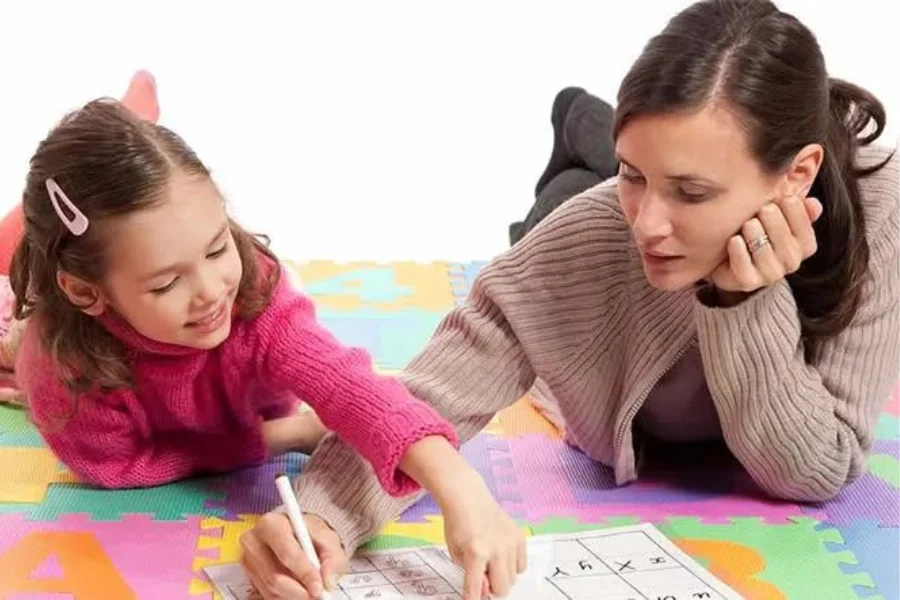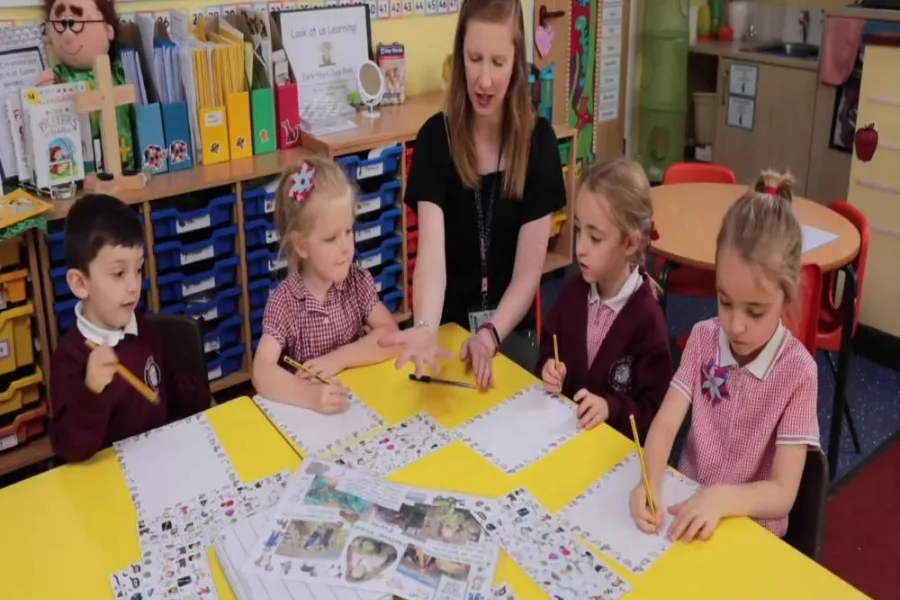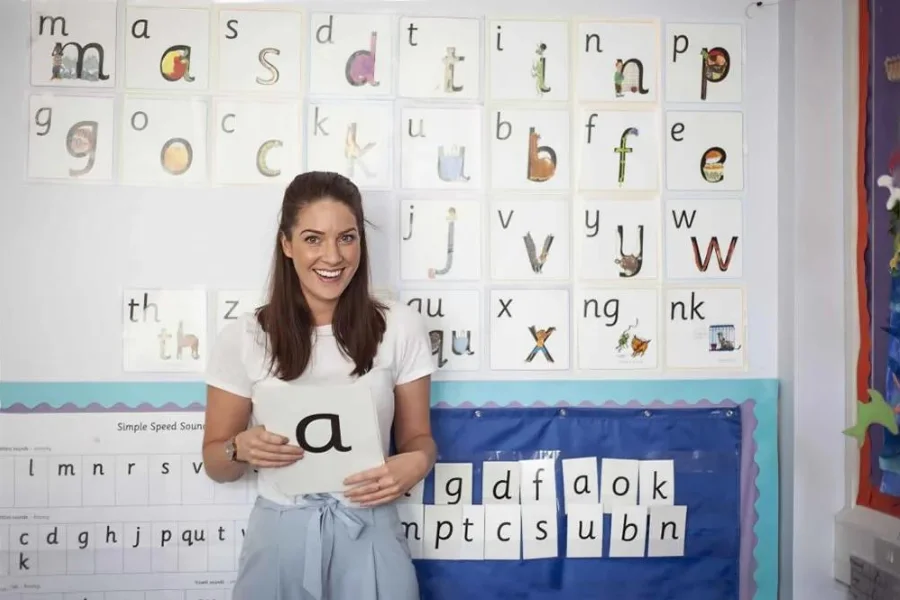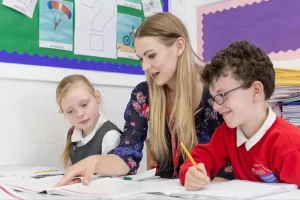
Source: vicensvives
Embarking on the path of learning to read can be both thrilling and stimulating for young students, and Phonics Rules play an important role in this procedure. Comprehending Phonics Rules is as same as revealing a code, converting secretive cords of the alphabet into familiar spellings and sentences. As a keystone of initial literacy, Phonics Rules not only help children crack words but also lay the base for verbal communication and language understanding.
This article focuses on discovering the facts of Phonics Rules and providing visions and policies to help young learners master this vital skill. By exploring the domain of Phonics Rules, we focus on helping parents and teachers instruct children through the early, yet important, stages of their reading voyage.
Short Vowel Sounds – Phonics Rules
One of the foundational phonics rules is the recognition of short vowel sounds. Vowels (a, e, i, o, u) typically have a short sound when they appear alone in a syllable or word. ‘A’ in “cat”, ‘e’ in “bed”, ‘i’ in “sit”, ‘o’ in “top”, and ‘u’ in “bug” are a few examples of small sounds. For young learners, understanding these sounds is essential since they serve as the basis for many simple spellings.
Long Vowel Sounds – Phonics Rules
Little vowels contrast with big vowels, which sound like their names. This phonological rule is evident in spellings such as “cake” (where the ‘a’ sounds like ‘ay’), “tree” (where the ‘e’ sounds like ‘ee’), “bike” (where the ‘i’ sounds like ‘igh’), “boat” (where the ‘o’ sounds like ‘o’), and “cube” (where the ‘u’ sounds like ‘you’). Different English spellings can be spoken more easily when one knows the distinction between short and long vowel sounds.
To join Phonics Teacher Training Course, call on +919869866277 / +919869546913.
To download brochure of Phonics Teacher Training Course, click here!

Source : verywellfamily
Silent ‘e’ – Phonics Rules
The silent ‘e’ phonics rule is fascinating. It modifies the articulation of a spelling by creating the preceding vowel into a long sound, while the ‘e’ itself remains silent. For instance, in “bit” and “bite”, the ‘e’ at the end of “bite” creates the ‘i i’ a long sound. This rule is predominant in English and is an important concept for students to recognize.
Consonant Blends – Phonics Rules
Consonant blends include more than two consonants combined, with every retentive its sound when spelled. Instances contain ‘bl’ in “black”, ‘cr’ in “crisp”, and ‘st’ in “stop”. These blends are essential for developing reading skills, as they appear frequently in English words.
Digraphs – Phonics Rules
Digraphs are pairs of alphabets that make one sound. Phonics rules related to digraphs are crucial as they may be whichever vowel digraphs (like ‘ea’ in “bread”) or consonant digraphs (like ‘ch’ in “cherry”). Comprehending digraphs is significant for deciphering many English words.
R-Controlled Vowels – Phonics Rules
In this point of phonics rule, when a vowel is shadowed by an ‘r’, it makes all the more a different sound. Instances involves ‘ar’ in “car”, ‘er’ in “her”, ‘ir’ in “bird”, ‘or’ in “corn”, and ‘ur’ in “turn”. The above r-controlled vowels are important in unique word sounds and meanings.
Diphthongs – Phonics Rules
Diphthongs are difficult vowel sounds shaped by the grouping of two vowels in one syllable. The sound starts as single vowel and shifts near the other, like ‘oi’ in “boil” or ‘ou’ in “cloud”. Phonics rules for diphthongs are vital for fluent reading and correct pronunciation.
To join Phonics Teacher Training Course, call on +919869866277 / +919869546913.
To download brochure of Phonics Teacher Training Course, Click Here!

Source: luckykids
CVC Words – Phonics Rules
The CVC (consonant-vowel-consonant) rule is a pattern where a short vowel sound is sandwiched between two consonants, like “cat”, “dog”, and “bug”. This simple structure is a key teaching tool in early phonics education.
Magic ‘y’ – Phonics Rules
The ‘magic y’ phonics rule indicates that when a spelling finishes in ‘y’, and there is only a single consonant before ‘y’, the ‘y’ modifies the short vowel into a long vowel. For example, “cry” turns from a short ‘i’ sound in “crib” to a long ‘i’ sound.
Soft ‘c’ and ‘g’ – Phonics Rules
Lastly, the phonics rule for soft ‘c’ and ‘g’ arises into the picture when the following consonants are shadowed by ‘e’, ‘i’, or ‘y’. The ‘c’ in “cent” and the ‘g’ in “giraffe” are spelled softly, not like their hard sounds as in “cat” or “go”.
Comprehending these phonics rules is a cornerstone of knowledge to read and write operatively. These rules not only guide learners in decoding words but also lay a strong foundation for language proficiency. Phonics, as an integral part of literacy education, opens doors to a world of words, empowering learners with the skills needed for effective communication
Phonics Course Online
In the domain of phonics education, the significance of phonics cannot be denied. To provide this requirement, the program of Phonics Course Online provided by Vidhyanidhi Education Society stands as an ideal choice for aspirant teachers. This program is accurately intended to prepare educators with the required services to successfully teach phonics.
Here’s a thorough insight into what this program involves:

Source: ruthmiskin
24 Hours of Intensive Training
The Phonics Teaching Course involves a rigorous 24-hour training program. This intensive training ensures that educators are thoroughly prepared to teach phonics with confidence and expertise. Each session is crafted to enhance understanding and practical application of phonics in educational settings.
UK-based Synthetic Phonics Teaching Methodology
The course follows the renowned UK-based Synthetic Phonics Teaching and Learning Methodology. This approach is widely recognized for its effectiveness in teaching reading and writing. It emphasizes the relationship between sounds (phonemes) and their corresponding letter patterns (graphemes), a key aspect in the types of phonics.
Audio-Visual Teaching Aids
The course includes lectures with the use of audio-visual teaching tools to improve the learning process. This contemporary method of instruction not only increases student engagement but also accommodates different learning preferences, making phonics comprehension more efficient and accessible.
Sounds Demonstration with Jingles, Stories, and Actions
An innovative feature of the Phonics Teaching Course is the demonstration of sounds through jingles, stories, and actions. This creative method aids in memorizing and understanding the different sounds, making the learning process fun and interactive.
Practice of 42 Sounds
A crucial component of the course is the thorough practice of all 42 sounds, which includes both letter sounds and digraphs. This exhaustive practice ensures that educators are well-equipped to teach every aspect of phonics, aligning with the various types of phonics methodologies.
Mock-drills
The course includes mock drills, providing a hands-on experience in phonics teaching. These drills are designed to simulate real classroom scenarios, giving educators a practical understanding of how to apply their knowledge effectively.
Doubt-Solving and Question-Answer Sessions
To enable a complete understanding of the program resources, there are enthusiastic doubt-solving and question-answer sessions. These sessions allow teachers to illuminate any doubts and get deeper visions into the complexities of phonics training.
The Phonics Teaching Course provided by Vidhyanidhi Education Society is an accurately organised course, perfect for those wishing to master the art of instructing phonics. By covering a huge range of teaching approaches and safeguarding thorough practice, this program stands as a priceless resource for teachers focusing on excelling in the profession of phonics education.
Join Vidhyanidhi’s Phonics Course – Elevate your teaching journey today!
To join the Phonics Teacher Training Course, call on +919869866277 / +919869546913.
To download the brochure of Phonics Teacher Training Course, Click Here!
FAQs
Which is the Best Organization to do Phonics Teacher Training Course?
The best organization for the Phonics Teacher Training Program differs by location and personal inclination, but Vidhyanidhi Education Society is undeniably the best one.
What are takeaways given at Vidhyanidhi Education Society's Phonics Training Course?
Vidhyanidhi Education Society offers comprehensive course material, teaching aids, and practical techniques in their Phonics Training Course.
What Qualification is needed to start Phonics Classes for Kids?
To start Phonics classes for kids, a basic teaching qualification or certification in Phonics Teacher Training is usually required.



